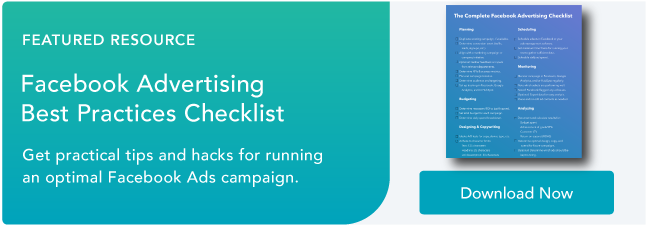In 2020, more than 9 million companies were advertising on Facebook.

It's no surprise that businesses have been flocking to the social media giant for their advertising needs.. After all, Facebook does have the biggest global audience of all social networks.
In fact, in the second quarter of 2020, Facebook surpassed 2.7 million monthly active users. With a user base this big and broad, there are thousands of brand awareness opportunities for companies in almost all industries.
But, while brands are spending millions of dollars a year on Facebook Ads, they don't always get the ROI they expect.
In late 2017, 62% of brands reported losing money or breaking even on Facebook Ads. Since then, the social media company has added more advertising features to help brands across its platforms.
Despite this effort to become more brand-friendly, and the many success stories with ads, the platform still can't guarantee ROI for every advertiser.
As a marketer, you can benefit greatly from Facebook Ads. But, how do you do this without losing money?
In this blog post, I'll walk you through a few of the most common Facebook advertising mistakes and tips for how to avoid them.
Download Now: Free Facebook Advertising Checklist
5 Facebook Ad Mistakes to Avoid
1. Limiting your audience targets.
You might think that advertising to a small, highly-specific group of people will help you save money while directing your content to only people who will click. But, according to one of HubSpot's advertising experts, this is the exact opposite of what you should be doing.
"One of the most common mistakes I see people make on Facebook Ads is unnecessarily restricting their audiences. The bigger the audience that you create, the more options you’re giving Facebook on who they can serve your ads to," says Rex Gelb, HubSpot's Director of Acquisition, Analytics, and Paid Advertising.
"For example, giving Facebook one $100 budget to be spent between Canada and the United States is going to be spent more efficiently than running a $50 budget for each country," Gelb adds.
As you determine how broad your audience targets should be, consider the objective of your ad. If you're interested in traffic or specific product purchases, you might want to zone in on a specific audience of people that will be most interested in your offering. But, if you're looking to build brand awareness or promote a widely appealing offer, experiment with a broader target audience.
2. Targeting the wrong people.
While brands mistakenly target small groups when they should aim for broader audiences, they can also be guilty of targeting the wrong audience completely. This isn't surprising or uncommon.
Across platforms, including Facebook, we've seen many big brand campaigns fall flat because companies simply didn't research who their target audience was or the messaging they wanted to hear.
Even though marketers commonly mistarget their audiences when creating all sorts of marketing campaigns, this miss-step is even riskier when you're investing in paid promotions, such as Facebook Ads. If you don't target your ads to prospects who will be interested in your offerings, you'll waste ad spend just to find out that no one even visited your site.
To avoid mistargeting in every aspect of your marketing strategy, it's good to develop one or more buyer personas for each product or offering your company sells. Building a persona might help you learn more about how old your average buyer is, their job role, and other information that you can then use to target your Facebook Ad's audience.
Aside from creating a buyer persona, you can also leverage the data you gain directly from your Facebook Page.
Haidi Zhu, WeWork's Head of Performance Marketing told HubSpot that her team uses Facebook Insights and other tools to learn more about their social media audiences and potential ad targets.
"We start by analyzing the demographics of our current members to better understand who they are based on location, interests, industry, and more," Zhu said in a 2019 blog post. "We use this data to develop audiences to identify potential members and further segment down to deliver ads that feature the WeWork offerings, locations, and services that we strongly believe will benefit them most.”
For more help with choosing the right Facebook Ad audiences, check out this video which walks you through how to target ads on Facebook, and what strategies you should use.
3. Not creating enticing content.
Ad platforms such as Facebook Ads will direct your promotion to your target audience, which can increase the chances of ROI. However, when an ad is delivered to a user, they might not click if the content isn't valuable or boring. This is why you'll want to make sure you're only paying to circulate great ad content that will engage audiences.
To create an ad worth clicking on, start by determining which type of content your audiences will enjoy most. For example, do your audiences engage with video posts more than text-based posts? Or do they love photos or carousel content more than other content types? Learn as much as you can about what content will catch their eye and then lean into those formats.
Once you decide which type of content you'll offer audiences, you should also research which types of messaging will grab attention, stop users from scrolling, and get them to click on your ad.
Learning about your audience and what ads they'll actually click on can take a great deal of time and energy. But, like with any marketing tactic, understanding and leveraging your buyer persona can have great benefits.
Looking for inspiration around ad content? Check out these effective Facebook Ad examples.
4. Skipping the A/B test.
As we mentioned above, you'll want to create and put money behind ad content that people will click on. And, as you develop a buyer persona for your brand, it will be easier to identify which ad content is most engaging.
But, even when you're 100% confident in your ad content, there's always a small chance it could fall flat for some segments of your audience. This is why you'll want to experiment with and test ad alternatives.
Luckily, Facebook allows users to A/B test ads. With this feature, you can submit multiple ad types with different formats, images, or text, to Facebook when you launch an ad. From there, Facebook will send different variations of the ad to a small segment of your target audience and analyze which format gets the most engagement. From there, the ad that gets the most engagement will be sent to the bigger portion of your audience.
Aside from presenting audiences with the most engaging ad version, Facebook also shows advertisers which ad performs best. This can help brands further define an ad content strategy that's right for their audience.
"It's easy to think you know what will capture your audience's attention, but you'll be surprised when you actually test it," said Frank Emanuele, co-host of The Marketers Next Door Podcast, in a 2019 blog post.
"I always compare at least two options and track their performance carefully. Then I put my spend toward the top performer to get the most bang for my buck. I often find that the creative I liked best actually isn't my top performer." Emanuele added.
5. Running ads on auto-pilot.
Facebook Ads is a very intuitive software that does a lot for the average marketer, from targeting audiences to A/B testing ad variations. But, once you press the launch button, you shouldn't rely on Facebook to manage your entire promotion -- especially if you plan to run it for a long time.
When you run your ads on auto-pilot, you run the risk of two things: Facebook ad fatigue and losing funds when the content you launch is uninteresting or mistargeted.
Avoiding Facebook Ad Fatigue
If you run the same Facebook ad to the same audiences for multiple days, there's a chance that users could see the promotion more than once. If your audience members repeatedly see the same photos, content, and messaging from you on their feed, they might be less likely to click on it each time they see it.
When your Facebook Ad continues to be shown to the same targets over and over again but doesn't receive the same engagements, this could negatively impact your return on ad spend. This whole scenario is known by social media experts as "Facebook Ad Fatigue."
6. Avoiding Other Facebook Ad Mishaps
As with any marketing or other paid tactics, you'll want to track KPIs from the day of the ads launch until the moment it ends to ensure your investment is effectively generating ROI. This will help you know when to pull or edit an unsuccessful ad. This data can also help you learn what you did right when an ad generates ROI.
When tracking Facebook Ads, you should start by analyzing the KPIs related to your campaign's objective. For example, if your ad objective relates to increasing awareness, you should track the reach and engagement of your ad and Facebook page.
You also should use Facebook Ads Manager and other tracking tools, such as your website's CMS analytics dashboard or UTM codes, to learn about how your ad is performing in other ways on the platform. For example, if your ad isn't generating leads, but is generating traffic or page views, you might want to pivot your objective or strategy so that your content and ad goals align.
Optimizing Your Facebook Ads
While paying Facebook to circulate your content will get it seen by audiences around the world, it's up to you to motivate the audiences to click on it. As you develop or refine your Facebook Ad strategy, be sure to keep these things in mind:
- Content is key: Audiences won't click on a boring or valueless ad, just like they won't click on uninteresting social media posts. While Facebook will place your content on a target user's feed, the content will still need to entice that person to click.
- Know your buyer: The process of creating great content relies on you understanding what your buyer persona will value in a brand and product. Because of this, you'll want to understand who your target audience, demographic, and buyer is. Not only will it allow you to target your content to the right people in Facebook Ads, but it will help you create the most engaging ad content possible.
- Broaden your horizons: While you should create content your persona will love, don't be afraid to target ads to larger audiences on Facebook's massive platform. This might help you broaden your awareness and learn about new audiences that will buy your product.
If you're ready to create your first or next Facebook Ad campaign, check out this blog post for a handy step-by-step guide.
Editor's Note: This post was originally published in June 2018 but was updated in December 2020 for comprehensiveness. 